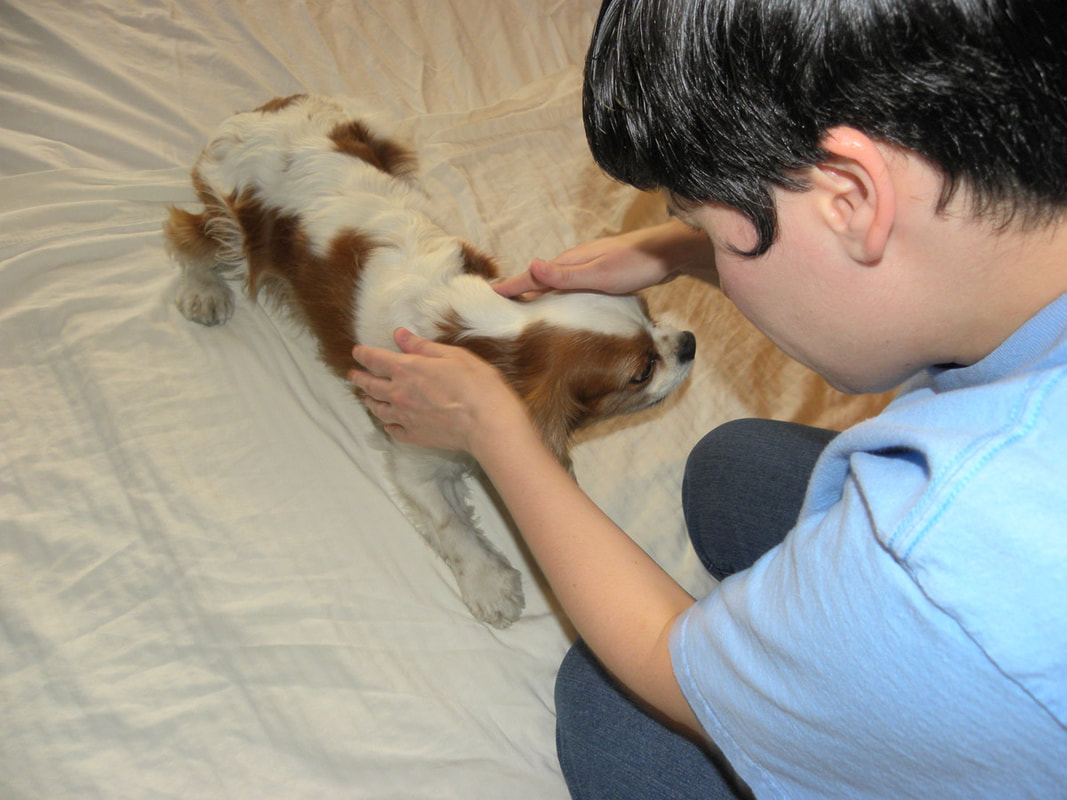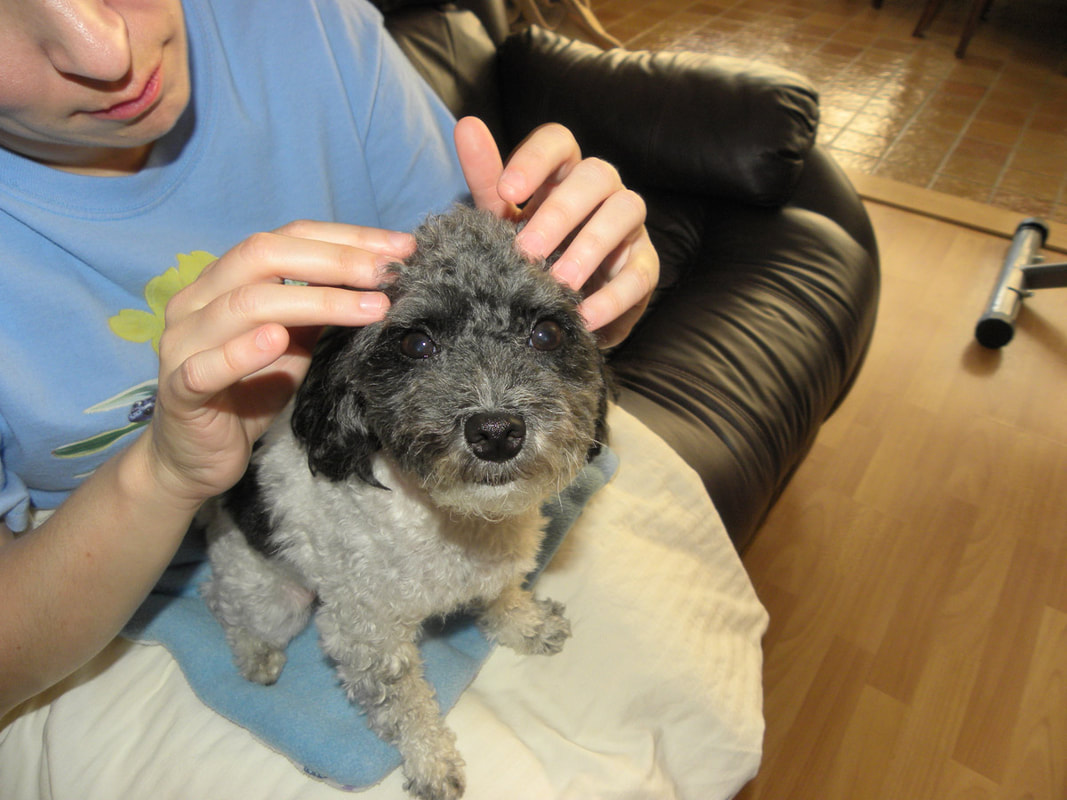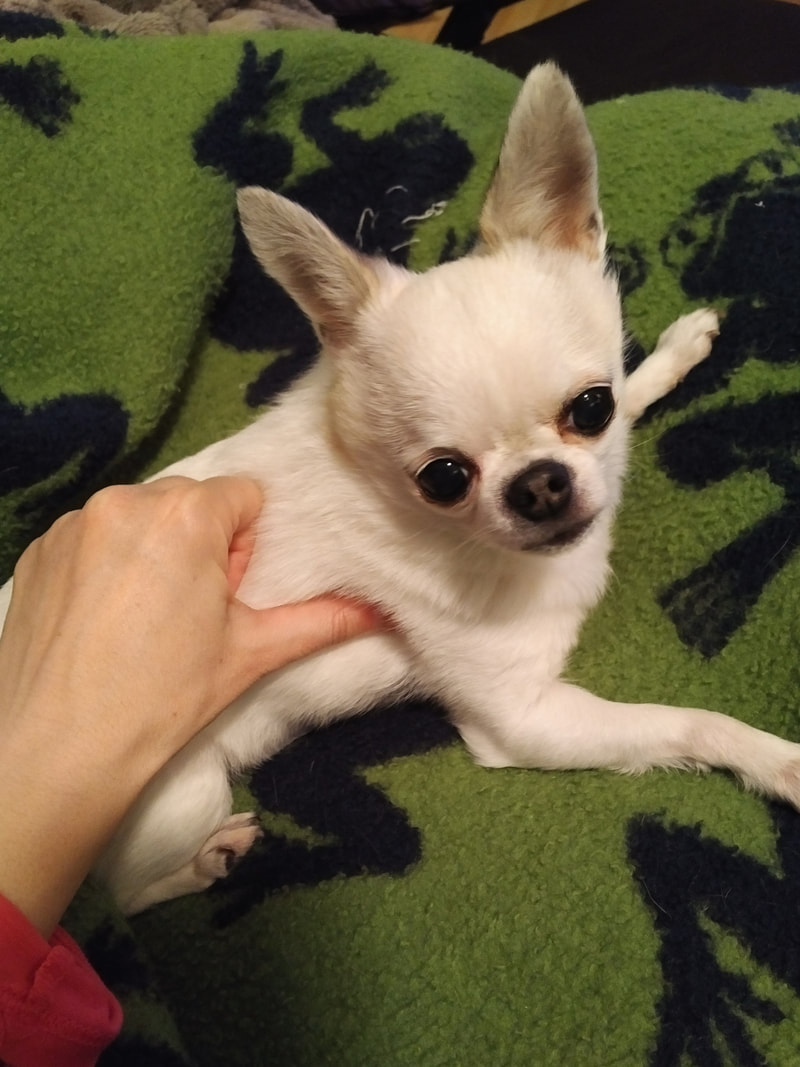|
Continuing from yesterday and what happens at the first pet massage appointment…Part 2, the second half of the first appointment… It’s best for Mom and/or Dad to be near by in the case of dogs, as this is reassuring for them (and sometimes Mom or Dad can be hands on, offering treats or pets if their animal is feeling unsure). I begin with what’s called the effleurage stroke (pressure in the base of my palm, fingers together and hovering above) down either side of the neck. This warms the muscle tissues and prepares the area for a deeper stroke — raking (fingers splayed, pressure in the tips), which I do down the neck with the lay of the fur. A stroke called petrissage follows (done with my thumbs, in a ‘punching bag’ kind of motion). I finish with at least three strokes of effleurage before moving on to the next region. A similar routine follows, but also includes kneading after petrissage, down through the shoulders and arms (and hopefully all the way down to the digits of the paws — it depends on what each pet is willing to allow, as some are fussy about having their paws touched). The barrel region is next, with effleurage an inch down from the spine (followed by petrissage), raking between the ribs, followed by some petrissage between the ribs and in the abdominals. Some work in the pectorals will happen before or after this area, depending on how the animal is positioned. I finish with some strokes up from the sternum and through the abdominals towards the stifle/hip before doing some stimulating strokes (sometimes just tapotement - a piano playing like motion, other times including what’s called “cupping” and “hacking”) across the shoulders and barrel. Then I finish up in the hip area, working down past the stifles, down to the digits (if your pet is willing), with both the soothing and stimulating strokes previously mentioned. I will sometimes do some soothing strokes, along with tapotement, in the facial and cranial regions right at the end, too. Some dogs really like massage in their face and around their head, but others don’t. Cats may like a little bit on the top of their head, but not so much around their face. As I go along, if I find a spot that is cold, stiff or knotted, I can also stop there and work on that area with acupressure. This involves either direct pressure, pulsing pressure, or rotations (depending on your pet’s tolerance) with my thumb on the knotted/tight/cold spot to relieve the tension. JOIN MY EMAIL LIST AND STAY INFORMED ON ALL THINGS CANINE AND FELINE MASSAGE! I’LL BE POSTING A VIDEO OF SHIH TZU, HOLLY’S FIRST MASSAGE APPOINTMENT, SO YOU CAN SEE IT FOR YOURSELF…YOU CAN JOIN VIA THE POP-UP AVAILABLE ON ALL PAGES. OR CLICK HERE.
I'll be posting my last post tomorrow about what happens following the first appointment, including future strategies, personalized for your pet. Click HERE for the previous post. Click HERE for the NEXT post...
0 Comments
Leave a Reply. |
AuthorRegan is a certified Canine Massage Therapist (CCMT), has certification in First Aid and CPR for Pets, and some beginner training in Herbal Remedies and Aromatherapy for personal use. Archives
July 2024
Categories |





 RSS Feed
RSS Feed